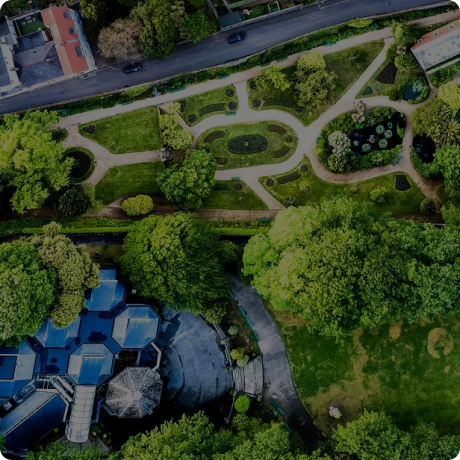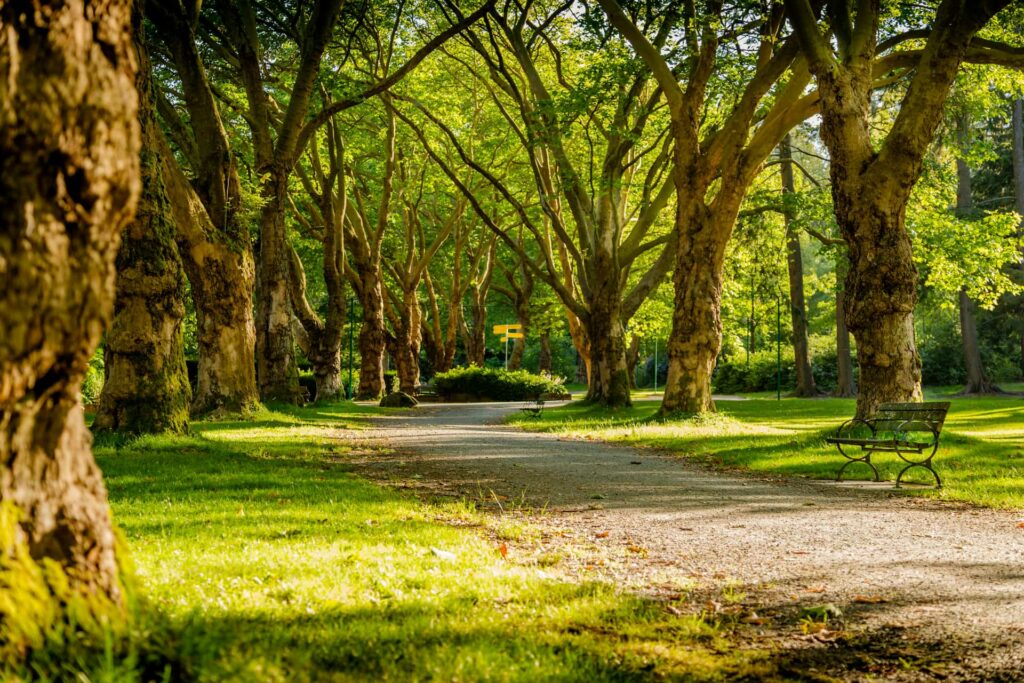ASITIS recently conducted an evaluation of the 3-30-300 rule in the Královo Pole district of Brno, aiming to assess the impact of urban greenery on the quality of life for city residents.
The objective of this case study was to assess the applicability of this concept in the urban landscape of Brno and to evaluate the benefits it could bring to the residents of the Královo Pole district.
Introducing
… the rule 3-30-300
The 3-30-300 rule, developed by urban greening expert Cecil Konijnendijk, provides a framework for enhancing urban environments through greenery (Konijnendijk C., 2022 nad 2023). The rule proposes three key conditions for improving the urban living experience:
Urban greenery strategically
3
30
300
… the health benefits of 3-30-300
Following the 3-30-300 rule has significant mental health benefits, as evidenced by the study conducted in Barcelona (Nieuwenhuijsen et al., 2022). The study found that individuals who met the 3-30-300 criteria reported better mental health, reduced use of antidepressants and sedatives, and fewer visits to psychologists or psychiatrists. Specifically, the presence of surrounding greenness (serving as a surrogate for the 30% tree canopy cover) was strongly associated with these positive outcomes. Although only a small percentage of people in Barcelona fully met the 3-30-300 criteria, those who did experienced notable health benefits, underlining the importance of integrating green spaces into urban planning to promote mental well-being.

Technological museum park, Královo Pole
… the Background of Královo Pole
Královo Pole is one of the largest districts in Brno, characterized by a mix of residential, commercial, and industrial areas. The district is home to a diverse population, including families, students, and professionals, due to its proximity to several universities and business centers. While the district benefits from existing green spaces such as parks and tree-lined streets, rapid urban development in recent years has posed challenges to maintaining and expanding these green areas. As urbanization continues, there is a pressing need to assess the district’s compliance with the 3-30-300 rule to ensure that residents continue to benefit from accessible and sufficient urban greenery.
Methodology
The evaluation process was meticulously structured into several phases to ensure a comprehensive analysis. Geographic Information Systems (GIS) and ortophoto data were used to assess the state of green spaces.
Step by step methodology
The first step involved mapping the green spaces within Královo Pole and identifying areas where trees were visible from residential windows.
Next, the total area of greenery was measured and analyzed. This included public parks, private gardens, tree-lined streets, and other vegetative areas.
The final step was to assess the proximity of parks and green spaces to residential areas.
All results were summarized in a comprehensive report providing much needed context.
Overall outputs for rule 3-30-300 assessment with tree segments.

In this case study you will further learn…
- Detailed description of 3-30-300 analysis procedures
- How green space and trees were defined and measured within each building and neighborhood.
- How the availability of parks and green spaces to residents was evaluated.
- How successful each policy has been in meeting the King’s Field requirements.
- Which areas meet the rules for tree visibility, green space coverage, and proximity to parks.
- Where are the areas with the greatest deficiencies in urban green space and how does this affect the quality of life for residents.
- An overview of the streets where the 3-30-300 rule is not met, and where, instead, quality green space and access to parks is provided.








